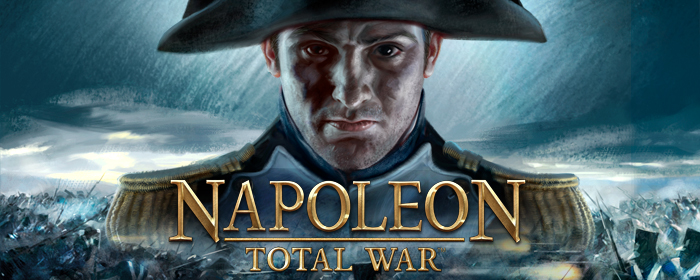About Napoleon: Total War
Spanning two violent decades at the end of the 18th and the beginning of the 19th centuries, Napoleon allows you to assume the role of legendary French Emperor Napoleon Bonaparte or one of his major rivals as you determine the course of history and fight to become the dominant global power of the age.
As with other Total War titles, Napoleon utilises a combination of real-time strategic battles on new visually breath-taking 3D maps, commanding swathes of minutely detailed soldiers on the battlefield, and turn-based game playing on the campaign map – building structures to produce military units and create a source of income, researching new technologies, sending agents on missions and dealing with other in-game factions through trade, diplomacy and war to establish and propagate your influence and the extent of your reign.
Napoleon takes steps in a new direction for the Total War franchise in that it is much more character and narrative driven than previous titles. Depicting Bonaparte’s progression from young Corsican boy to Emperor the game roots you firmly in his shoes and the action unfurls from his point of view. Events such as the death of Napoleon’s father influence game direction and cast the character as an empathetic one.
In the Italian and French Invasion of Egypt campaigns the story closely follows Napoleon’s early military career with smaller optional side missions that help drive the action forward. The major French campaign – the ‘Mastery of Europe’ is the most similar to traditional holistic Total War campaigns. In the fourth campaign, ‘Campaigns of the Coalition’ players can conversely govern Coalition nations including Great Britain, Russia and Prussia in an effort to defeat Napoleonic France in Europe.
To succeed in the campaigns, players must seize and maintain control of a number of territories whilst combating factors such as attrition (extreme climates will impact on troop numbers) and threat of revolution. Conflicts can either be automatically resolved by the computer or fought in real-time, as with previous Total War titles. In Napoleon some generals upon being defeated on the battlefield, including Bonaparte himself simply return to the regional capital to recover rather than die. Along with the new feature of attrition, units now automatically replenish lost soldiers when they are in the player’s territories. Some of Napoleon’s most famous historical battles, such as the battle of Waterloo can also be played separate from the campaign. A new multiplayer campaign mode is also present, along with custom multiplayer battles and a new drop-in system, allowing for human control of enemy armies during the single-player campaign.
During real-time battles a new physics system has been implemented resulting in heightened realism. For example cannonballs leave craters where they land. Smoke from gunpowder hangs in the air and can obscure vision during prolonged combat. Environmental factors also influence unit performance, for example rifles are more likely to backfire if used in the rain, and a unit’s elevation changes their maximum range.
The map is less broad but much more detailed than that of Empire: Total War and to reflect the intensity of the fighting during this era one turn represents only two weeks rather than six or twenty-four months. The artificial intelligence system has also been upgraded resulting in challenging battles whether they are light skirmishes or full-blown wars.
Similar to Empire, land units are armed with gunpowder weapons, i.e. Muskets, cannons, etc and melee weapons such as bayonets and sabres. Cavalry units can only fight with melee with a few exceptions. Artillery units are the best for hitting enemies at a distance. All units gain experience to level up and have morale that can be affected by multiple factors and changes how efficient they are in battles.
Napoleon: Total War was released in Europe on 26 February 2010. It is the sixth standalone title in the Total War series. It was developed by the Creative Assembly and published by Sega.
